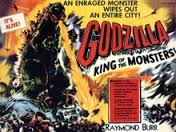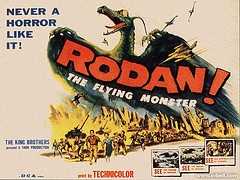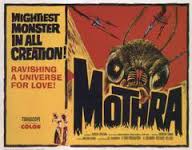KAIJU |
|---|
The Finest In Japanese Monsters
| Original Godzilla Theme: |
Kaiju is a Japanese word that literally translates to strange beast. However, the word Kaiju has been generally accepted as giant monster in English and refers to films from Japan featuring unnatural creatures of immense size. Kaiju films usually showcase Kaiju of any form attacking a major Japanese city and/or engaging other Kaiju in battle.
Studios producing Kaiju films are: Toho Company Ltd.; Daiei Film Company Ltd.; Kadokawa Pictures; Tsuburaya Productions; Shochiku Company Ltd. These companies occasionally joined forces to produce films.
Kaiju films are generally regarded as being divided into three separate eras: Showa, Heisei and Millennium.
The Showa Era refers to Kaiju films made between 1954 (Toho's Godzilla) and 1980 (Daiei's Gamera: Super Monster).
The Heisei Era refers to Kaiju films made between 1984 (Toho's The Return of Godzilla) and 1999 (Toho's Gamera 3: Awakening of Irys).
The Millennium Era refers to Kaiju films made since 1999, beginning with Toho's Godzilla 2000.
The Showa era is regarded as the "classic" Kaiju era.
Godzilla

Godzilla is probably the most famous of all the Toho Kaiju monsters.
Referred to as the King of the Monsters, he first appeared in Ishiro Honda's 1954 film Godzilla (Gojira in Japanese). He has become a popular culture icon, starring in 28 films produced by Toho Co., in addition to appearing in video games, novels, comic books and a television series.
As the film series progressed, some films took on less serious undertones portraying Godzilla as a hero while other plots still portrayed Godzilla as a destructive monster; sometimes the lesser of two threats who plays the defender by default but is still a danger to mankind.
Although Godzilla's appearance has varied slightly over the years, the overall impression has remained consistent. Inspired by the fictional Rhedosaurus created by Ray Harryhausen for the film The Beast from 20,000 Fathoms, art director Akira Watanabe's iconic character design is based around the concept of a dinosaur with an erect standing posture, scaly skin, spikes on its back and tail and a furrowed brow. To emphasise the monster's relationship with the atomic bomb, its skin texture was inspired by the keloid scars seen on Hiroshima's survivors. The original costume was painted brown, though Godzilla has also been depicted as black, grey or green.
Godzilla's signature weapon is his atomic breath, a concentrated stream radioactive fire that is unleashed from his mouth while his dorsal fins glow. Toho’s special effects department has used various techniques to render the breath, from physical gas-powered flames to hand-drawn or computer-generated fire. Godzilla is shown to posess immense physical strength and muscularity.
Godzilla's appearance has traditionally been portrayed in the films by an actor wearing a latex costume, though the character has also been rendered in animatronic, stop-motion and computer-generated form. Over the years, several actors have donned the monster suit, including Haruo Nakajima, Katsumi Tezuka, Yu Sekida, Seiji Onaka, Shinji Takagi, Isao Zushi, Toru Kawai, Kenpachiro Satsuma, Tsutomu Kitagawa and Mizuho Yoshida.
Godzilla's distinctive roar was created by composer Akira Ifukube, who produced the sound by rubbing a resin coated glove along the string of a contrabass and then slowing down the playback.
Films Featuring Godzilla
Rodan

Rodan is a mutated pterosaur introduced in Toho's 1956 Rodan. He is occasionally a rival and enemy of Godzilla, but is usually depicted as one of Godzilla's allies, much like Anguirus. Rodan and Anguirus both started out as enemies of Godzilla, which explains the occasional enmity between the creatures and Godzilla himself on the rare occasion that they are pitted against one another.
Rodan first emerged from a giant egg that lay underground in a mountainside. It took only days for Rodan to reach its full size. It grew large horns on the back of its head and sharp serrated spikes on its chest. Rodan's skin is dark brown in color, although after turning into Fire Rodan in the Heisei film Godzilla vs. Mechagodzilla II Rodan's skin turned brick red. In the Showa and Millennium eras Rodan stands as tall as Godzilla but in the Heisei era Rodan and Fire Rodan stand only about 2/3 as tall as Godzilla. In the Heisei era the prominent rows of spines on his belly are replaced with overlapping ridges of bone and he has three horns on his head instead of two. Millennium Rodan looks more like the Showa version but retained the Heisei era ridges of bone on its chest. It also had only two horns again, and its color is similar to the Showa version.
Rodan has layers of spikes on its chest that can be used as a weapon. Rodan was has the ability to emit sonic booms from its body, destroying any and all structures in its path. In the 1956 film Rodan was given another weapon that was never used again, a concentrated blast of wind from its mouth.
Films Featuring Rodan
Mothra

Mothra (Mosura in Japanese) made her film début in Toho's 1961 film Mothra. She has appeared in several Toho Kaiju films.
She is a giant lepidopteran with characteristics both of butterflies and of moths. Film have depicted Mothra in various stages of the lepidopteran life cycle: Mothra's mammoth egg is brightly colored in blue and yellow waves. The egg hatches into her larva, a massive brown, segmented caterpillar (resembling a silkworm) with glowing blue—red when angry—eyes. In rare circumstances, twins may emerge from the egg. The caterpillar eventually spins a silken cocoon around itself (the pupa stage), and from this cocoon the adult Mothra emerges, a gigantic moth-like creature with brightly colored wings.
As a larva, Mothra sprays her opponents with silk as an attack, she also uses her mandibles for a close combat bite. As an adult, her wings can create gales which tear apart buildings and send other Kaiju flying. Her great bulk of a body is commonly used to her advantage in battle to slam into opponents and her strength can help her to drag and even lift monsters like Godzilla. Her final strategy is to emit "scales", a yellow poisonous powder that can hopefully asphyxiate an enemy. She only uses that attack when she knows she is going to die, because the extreme loss of scales will cause her to lose her flight.